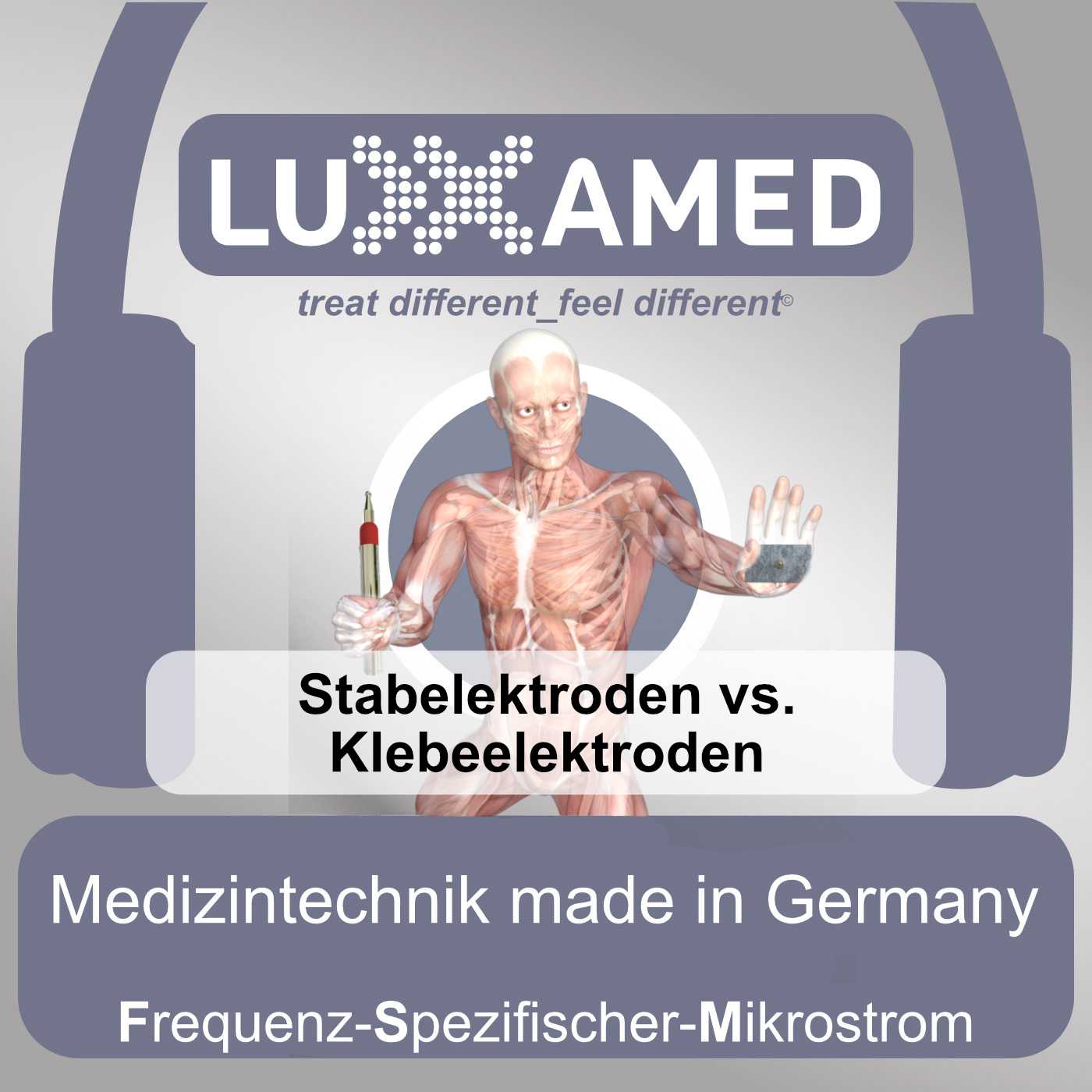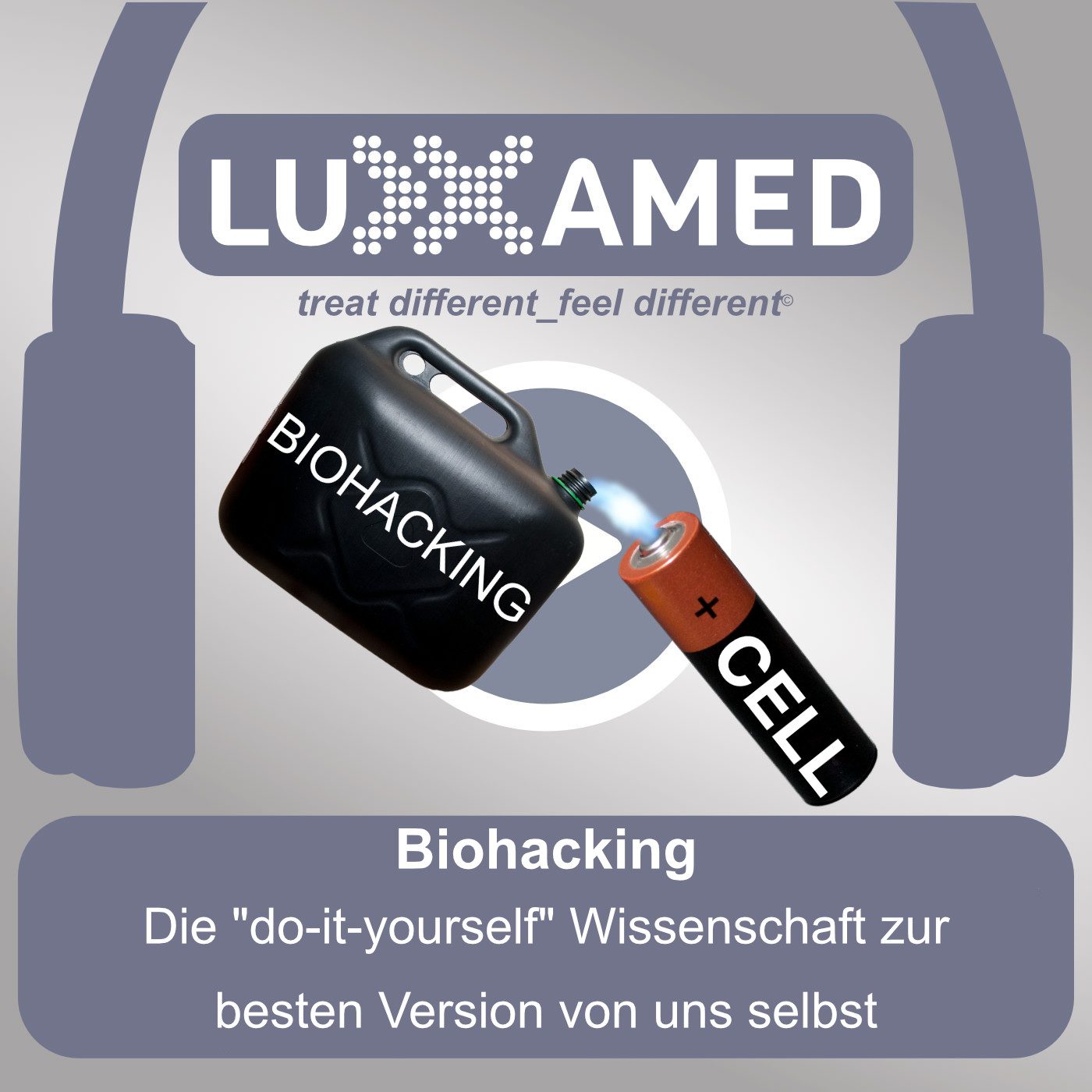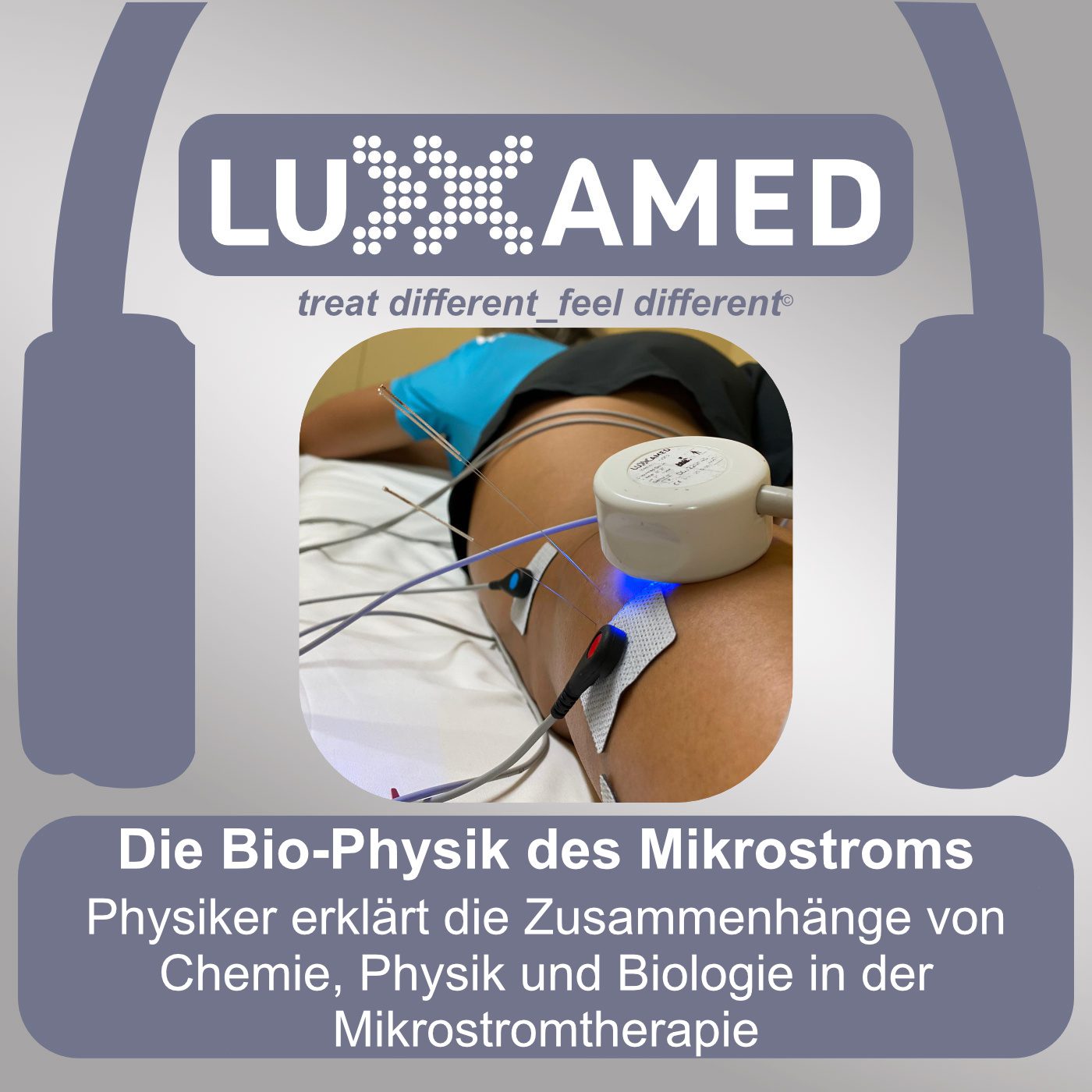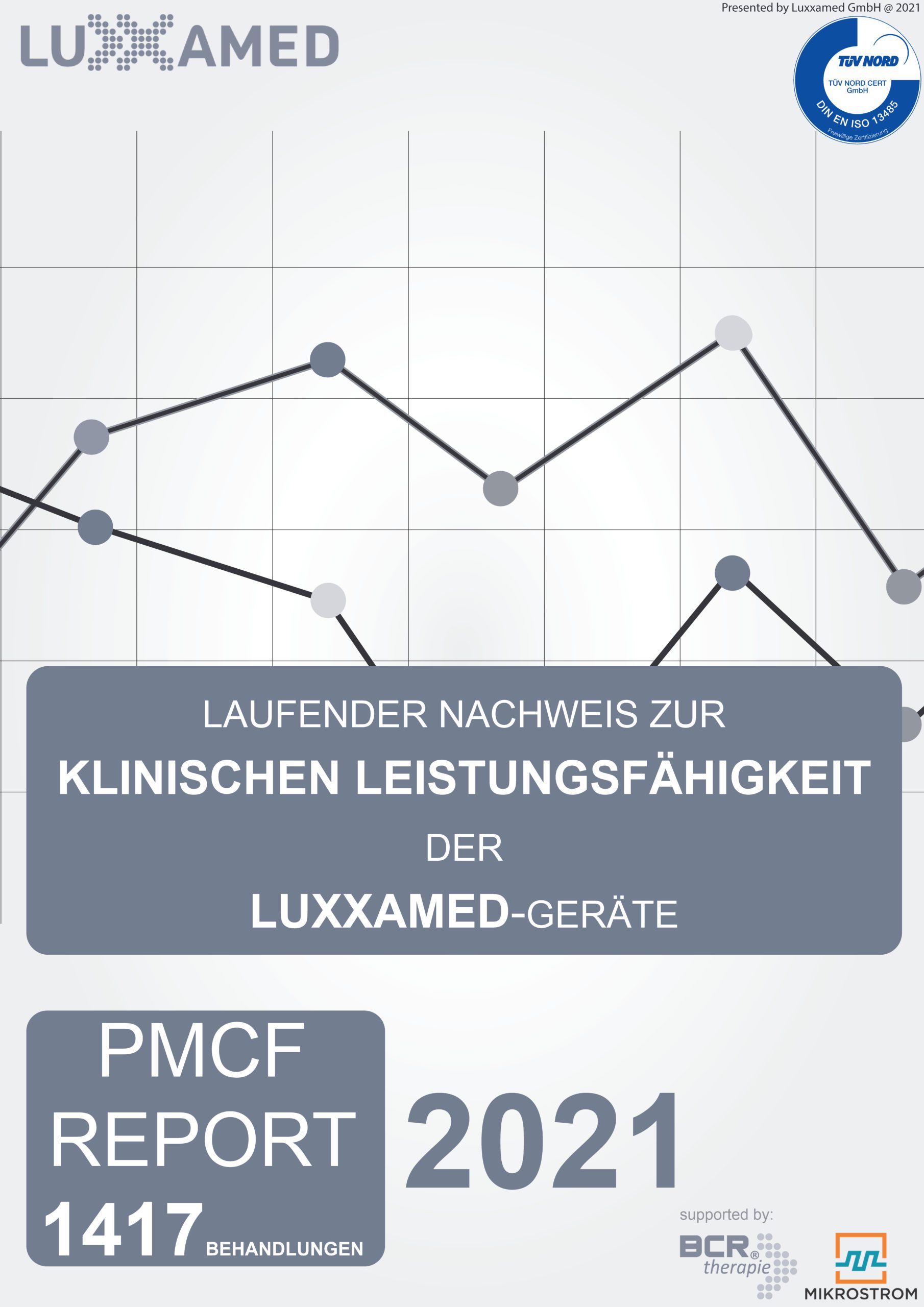Dieser Beitrag ist auch verfügbar auf:
![]() Deutsch
Deutsch
Post-Covid-19 Therapie Podcast – Microcurrent a possibility?
Two-part podcast show – Interview with Dr. med. univ. Voracek and Dr. Stüker on post-Covid-19 therapy with microcurrent – a hypothesis
Teil 1 von 2
Click on the button to load the content from podcast49ce3a.podigee.io.
Teil 2 von 2
Click on the button to load the content from podcast49ce3a.podigee.io.
Podcast: Post-Covid-19 therapy part 1/2 – microcurrent a possibility?
Introduction of microcurrent therapy in increasing performance after Covid-19
Microcurrent is already used successfully in amateur and professional sports as part of regeneration and performance enhancement. But what about the follow-up treatment of corona patients (Covid-19 patients)? Do you know any concepts or starting points of what post-corona therapy could look like?
Microcurrent therapy influences the cells’ ability to regenerate. Studies like Cheng et al. (1982) show that microcurrent intervenes in increasing ATP synthesis, membrane transport and protein synthesis. (CHENG et al., 1982)
In addition, a cell biological study by the Fraunhofer Institute showed that the metabolic activity can be demonstrably increased by using the Luxxamed HD2000 +. In the laboratory in-vitro investigation, an increase in the metabolic activity of previously damaged cell cultures of up to 56% could be achieved. (Schönfelder, Walker & Kenner, 2017)
If one also takes into account the effect of frequency-specific microcurrents on inflammatory processes in the tissue, it can be stated that these can have a significantly positive influence on the pro-inflammatory cytokines (IL-1, IL-6 and IL-8). (McMakin, Gregory & Phillips, 2005)
Condition of post-Covid-19 patients
The RKI reports that even with a mild course of a Covid-19 infection, long-term consequences such as symptoms of fatigue, memory disorders and memory problems can occur. Actual long-term effects are not available at the time of writing, due to a lack of representative data. (RKI, 2020)
The bridge to increasing the performance of post-Covid-19 patients – a hypothesis
This podcast episode (part 2 coming next week) is about the possibility of the additive use of microcurrent therapy in post-Covid-19 patients. The doctor (Dr. med. Univ. Voracek) and the physicist and developer of microcurrent systems (Dr. Thorsten Stüker) talk about the basics of microcurrent and its application to the therapy of post-Covid-19 patients. One of the most important aspects here is the increase in performance through the use of microcurrent and the influence of inflammatory processes in the body.
Literaturverzeichnis
CHENG, N., van HOOF, H., BOCKX, E., HOOGMARTENS, M. J., MULIER, J. C., DIJCKER, F. J. de et al. (1982). The Effects of Electric Currents on ATP Generation, Protein Synthesis, and Membrane Transport in Rat Skin. Clinical Orthopaedics and Related Research, &NA;(171), 264-272. https://doi.org/10.1097/00003086-198211000-00045
McMakin, C. R., Gregory, W. M. & Phillips, T. M. (2005). Cytokine changes with microcurrent treatment of fibromyalgia associated with cervical spine trauma. Journal of Bodywork and Movement Therapies, 9(3), 169–176. https://doi.org/10.1016/j.jbmt.2004.12.003
RKI (Robert Koch-Institut, Hrsg.). (2020). Epidemiologischer Steckbrief zu SARS-CoV-2 und COVID-19. Zugriff am 07.12.2020. Verfügbar unter: https://www.rki.de/DE/Content/InfAZ/N/Neuartiges_Coronavirus/Steckbrief.html
Schönfelder, J., Walker, S. & Kenner, L. (2017). Wirkung einer neuen Gerätegeneration auf in vitro-Zellkulturen. AP 3: Wirkung der Mikrostromtherapie auf in vitro-Zellkulturen (Frauenhofer FEP, Hrsg.).
Vielleicht auch interessant?
Alle Podcast-Episoden auf einem Blick!
Podcast transcript part 1/2 of the post-Covid-19 interview with microcurrent?
00:00:00
Patrick: Welcome to a new episode of Luxxamed GmbH. My name is Patrick Walitschek. Today I have a premiere, if I will, because it’s an interview – we’ve done that several times in the past – but it’s not just an interview with one person. This time we are three people in total and I am allowed to moderate them through this episode.
00:00:24
Patrick: My two interlocutors are on the one hand Dr. Voracek, doctor and orthopedist from Memmingen, and has been using microcurrent therapy in Germany for over twenty years. And also co-developer, especially with regard to the medical context with microcurrent, and actually also the developer of this Luxxamed cybernetics mode in microcurrent therapy.
00:00:52
Patrick: On the other hand: physicists, developers, software developers, hardware developers of microcurrent systems, Dr. Thorsten Stüker, who has been in the field for many years, especially when it comes to the actual technical, physical development of microcurrent software and microcurrent systems. I’m especially happy to finally have these two luminaries together. So on the one hand physics: the physical, electrotechnical laws and so on, and on the other hand also medicine.
00:01:27
Patrick: This episode today is about the current situation. It’s about, it is well known that we are currently shaken in the world by the Corona virus or more precisely Covid-19. The question arises, of course, and it is not just for us, it is also posed to many users of microcurrent therapy: To what extent is it possible – that is now a hypothesis – with Covid-19 microcurrent therapy is additive or complementary in the field of prevention, So the prevention, in the area of acute treatment or also in the area of regenerative aftercare for Covid-19?
00:02:15
Patrick: That’s why this episode is supposed to be about Dr. Voracek and Dr. Stüker. I am happy to see you both here and would say that you briefly introduce yourself again. Who they are, what they do, what they do. I’ve already told you a bit. Then the first thing I do now is to give Dr. Voracek the word.
00:02:40
Dr. Voracek: Hello, dear listeners. I am an orthopedic surgeon and have been working with microscurrent for over twenty years. Since then I have also been involved in the entire further development of the microcurrent and use the microcurrent in my therapies. The microcurrent is part of my causal treatment options for orthopedic diseases. To be honest, I can hardly imagine total orthopedic treatment without microcurrent.
00:02:15
Patrick: That’s why this episode is supposed to be about Dr. Voracek and Dr. Stüker. I am happy to see you both here and would say that you briefly introduce yourself again. Who they are, what they do, what they do. I’ve already told you a bit. Then the first thing I do now is to give Dr. Voracek the word.
00:02:40
Dr. Voracek: Hello, dear listeners. I am an orthopedic surgeon and have been working with microscurrent for over twenty years. Since then I have also been involved in the entire further development of the microcurrent and use the microcurrent in my therapies. The microcurrent is part of my causal treatment options for orthopedic diseases. To be honest, I can hardly imagine total orthopedic treatment without microcurrent.
00:03:20
Dr. Voracek: The microcurrent allows us to open up further access to the disease problem, to diagnose and then also to treat it in a targeted manner. Which of course has an advantage because we not only have access to chemistry, rehabilitation and surgery, but we also have an additional, very important factor. Namely the cell control, the influencing of the tissue and the regeneration of this tissue by the microcurrent. For me it is – yes, Patrick?
00:04:05
Patrick: No, great. I didn’t mean to interrupt you.
00:04:08
Dr. Voracek: I mean, that says the most important thing in the end. It is said that “many roads lead to Rome”: The more paths and possibilities we have and can use in therapy and, among other things, diagnose, the more targeted we can work, work more effectively and work more painlessly for the patient.
00:04:42
Patrick: Perfect. Yes, Thorsten, please.
00:04:47
Dr. Thorsten Stüker: So my name is Thorsten Stüker. I’ve already been introduced. I’m a physicist and a biophysicist, and I do electronics development. In principle everything that has to do with living organisms is interesting for me in the area of my development.
00:05:06
Dr. Thorsten Stüker: This human engineering also brought me to microcurrent at some point, because from my point of view microcurrent is the only way to treat and therapy holistically. And it is also a very good possibility, for example in pain therapy, to be able to do without medication in some cases completely and to be able to achieve considerable performance equally in increasing sports performance and also in the wellness area, in the area of well-being.
00:05:43
Dr. Thorsten Stüker: I basically developed a few years before I manufactured the first generation of devices myself. At some point I joined Luxxamed because Luxxamed, as the de facto market leader, is ultimately a very strong partner for me in development. As you can see, the network with Dr. Voracek and the company Luxxamed naturally offered me considerable advantages. Yes, that is what I can say so fundamentally.
00:06:20
Patrick: Perfect, perfect.
00:06:21
Patrick: Which I would take as an objection, because it might be interesting too. It actually has nothing directly to do with the basic topic of microcurrent, Corona, Covid-19. You just mentioned the topic of increasing sports performance and with that you can build a bridge to our current topic.
00:06:41
Patrick: It’s the case that you’ve been in this area for a long time. Many others are also trying to gain a foothold in this area. But maybe, before we really get into the topic, you could perhaps say another word or two about the topic of increasing performance in the context of classic athletes. Independent of sick people. Because I think that’s a very interesting topic.
00:07:07
Dr. Thorsten Stüker: In principle, we have to do with increasing sports performance, I would say, with several factors. One is after-training. That is, if you train, the training effect. Especially for those who rarely train, i.e. not for high-performance athletes, but also for those who rarely train.
00:07:27
Dr. Thorsten Stüker: The sore muscles, the classic one, that is, those micromuscular fiber tears that occur when you just didn’t pay attention while exercising. That can be mitigated a little.
00:07:37
Dr. Thorsten Stüker: You can increase performance due to the cellular influence. There is a better supply of ATP. Due to the corresponding dilation of the vessels, there is a corresponding increase in oxygen. Due to the changes in the osmotic ratio in the cells, the acid-base ratio is different than it would be without the microcurrent.
00:08:06
Dr. Thorsten Stüker: You can do a lot with microcurrent, especially in the area of increasing sports performance. Of course, we have to see very clearly, sport performance can be improved: the professional tennis player or the professional footballer. But that can also be an 84-year-old grandpa who would like to climb the stairs to see his grandchildren. I want to put sport in the right proportion. When it comes to sport, we always think of the professional athlete. But it’s not just the professional athlete who can benefit from it.
00:08:40
Patrick: Yes, what would you say? You are not only a doctor and orthopedic surgeon, but you have also been on the road for many years when it comes to sports. You’re Fed Cup, Davis Cup doctor in the Czech Republic. You are an Olympic doctor. In the end, if I may put it that way, that is also your daily bread, especially the interaction and therapy with athletes.
00:09:03
Patrick: How would you now, regardless of the traumatology, of the pain treatment, see it in terms of increased performance?
00:09:12
Dr. Voracek: The increase in performance we are talking about results from several levels. First of all, with the microcurrent we can achieve that we can shorten the rehabilitation or regeneration time after exercise. This means that the athlete is fit again faster. He can train better again.
00:09:38
Dr. Voracek: He can, shall we say, heal micro-injuries in his muscle tissue that he may have sustained during sport or training much faster, and this allows him to continue his cycle the next day. And therefore, as Thorsten has already said, this acid-base balance is very important to bring it back to normal. This already results in an increase in performance. That means, if I have to regenerate 2-3 days after a heavy load, it is of course different than if I only have to regenerate 24 hours.
00:10:20
Dr. Voracek: And that’s a point. The second point is that through the microcurrent, for example if I apply it before the performance, I can of course create certain conditions that also improve the tissue’s willingness to perform. I also see that with the athletes I coach.
00:10:48
Dr. Voracek: We have this especially with minor injuries that athletes suffer: We can treat them within hours. Within hours we can regenerate people and the next day they can do their sport again.
00:11:05
Dr. Voracek: There is this huge advantage with the microcurrent, because the point of contact in the tissue is so pronounced, and because we are of course with competitive athletes, we of course have to adhere to the doping rules. That means, of course, we don’t have all the options that we have with amateur athletes.
00:11:31
Dr. Voracek: But such methods are in great demand, especially among competitive athletes. Above all, there is the so-called “No Needle Therapy” or Policy that the Olympic Association follows. That means we may or should not inject as much. We shouldn’t use so many injections either. Only when it is necessary and certainly not infusions. That means infusions are restricted to emergencies or to syringes with 100 milliliters, which I can still apply intravenously. But that’s about it. And this micro-current allows us to compensate for this shortcoming.
00:12:20
Dr. Thorsten Stüker: We mustn’t forget that when I load a tissue, I never load it evenly. That means that I suddenly have cells in the same tissue fraction that have very little ATP. ATP is the body’s energy supplier. I will certainly add a few bars to it (unv.).
00:12:40
Dr. Thorsten Stüker: And we have cells around them that are less stressed. They have a lot of ATP. So they still have available energy. The microcurrent leads to a complete change in the osmotic conditions.
00:12:54
Dr. Thorsten Stüker: That means cells that have a lot of ATP suddenly release some. There is even a study where they wrongly thought: “Oh, the ATP production is increased by 500 percent.” This is of course complete nonsense. The ATP is released. That is there. The ATP that is not freshly produced and the cells that no longer have ATP can then absorb it accordingly.
00:13:15
Dr. Thorsten Stüker: In principle, that is precisely the way in which the body can regenerate itself in a much shorter time. In addition, the osmotic pressure changes. This also means that my acidic environment escapes from the cell much, much faster than it would happen under normal conditions.
00:13:43
Dr. Thorsten Stüker: That means the microcurrent supports me there too. This is, so to speak, the second building block in regeneration. Microcurrent supports me there too. And the third, and from my point of view perhaps even the most important building block, is distribution: Distribution is changing. The vessels are dilated with the use of microcurrent. And this vascular dilation ensures that more blood flow happens, so to speak, for the test subject. That is, the vessels become a little wider. It is simply more, so to speak, a potential source of energy around it. And that’s what makes it all interesting.
00:14:30
Dr. Voracek: The lymphatic drainage is also being improved. That is, the drain. In the end, the pollutants can be diverted much more easily from the periphery and we also stimulate the lymphatic activity with the microcurrent.
00:14:46
Dr. Thorsten Stüker: Yes, that goes hand in hand. Of course, this also goes hand in hand with the dilation of the vessels. Otherwise it wouldn’t work at all. This means that we have the situation in the tissue that it is brought to a maximum transfer mode, so to speak, so that on the one hand the lymph flow changes and the nutrient distribution changes and at the same time the osmotic pressures change.
00:15:13
Dr. Thorsten Stüker: The change in osmotic pressures is a key point. Because that which usually causes the biggest problems in sport, namely acidification of the cells, can be reduced. So this is the possibility.
00:15:28
Dr. Thorsten Stüker: There is actually part of the bridge on the subject of Covid and the subject of therapeutic considerations. What can we do with microcurrent? Can we do anything about that? First you have to deal with how the Covid works.
00:15:52
Dr. Thorsten Stüker: I’ll try to describe it with very simple words so that it becomes more understandable. When we look at a drawing of such a Covid, you can always see it in the newspaper, there are so little snags on it.
00:16:02
Dr. Thorsten Stüker: They call themselves spike proteins. These spike proteins can then dock onto a transfer domain of the cell, which is a transporter, so to speak. I’ll just call it a slot. The cell has certain points where it can in principle take up certain substances, in this case a calcium formation domain. This protein docks there with the help of the ACE2 enzyme. This process ensures that in the end the connection between cell and virus is actually established. The moment we take a closer look and see what happens when we apply microcurrent, we find out relatively quickly that it is actually the case that we have a significantly reduced permission from ACE2 and thus also a reduced coupling ability of the Virus during therapy.
00:17:11
Dr. Thorsten Stüker: That does not mean that we are killing the corona virus or using it to heal the corona virus, but that only means from a scientific point of view: We can slow down this inflammatory process slightly.
00:17:30
Dr. Thorsten Stüker: The second thing we can do: We can increase the performance of the test subject through the microcurrent. In my opinion, both together could result in a considerable advantage for a person suffering from Covid-19, but that is something that the doctor has to decide again.
00:17:51
Dr. Voracek: Well, we can see that people, especially these risk groups, who take a lot of drugs, are patients whose pH value is ultimately relatively low. These are patients who sometimes take a lot of medication and are over-acidic as a result. These people ultimately die from cellular exhaustion. That is, cellular breathing stops and the cell perishes. And we know what these ACE2 receptors do in the body. That is the starting point for this virus. The antibodies that are ultimately produced for this are there to compete with the virus on this ACE2 receptor and thus prevent it from docking there and unfolding its damaging effect.
00:19:04
Dr. Voracek: I think what we mentioned earlier, this pH value change due to microcurrent, is also a very important factor in the tissue as a whole. That means, we stimulate, we give the tissue strength to defend itself or we maybe give it a little time to get past the worst phase.
00:19:25
Dr. Voracek: I don’t know exactly how it works with microcurrent, maybe you know better? We know this from other viral diseases as well. I also used this with my children when they were little and had virus infections: I put a small device on them and then tried to help them. How far it accelerated the whole thing I don’t know, but I am convinced that it accelerated the healing or recovery.
00:20:03
Dr. Voracek: Why should this be any different with this virus than with the other viruses with which we have also had good experiences?
00:20:12
Dr. Thorsten Stüker: We have to say: This binding mechanism is used by many viruses from the group of Corona (unc.). So this is not really big news now. The news is rather that this corona virus also uses this binding mechanism.
00:20:32
Dr. Thorsten Stüker: The following is interesting in the whole consideration: If I reduce the ACE2 permission, I can make sure that the virus ultimately has to reduce its rate of reproduction, that is, the virus cannot itself multiply more as it could before. At the same time, we make sure that two things don’t happen:
00:21:00
Dr. Thorsten Stüker: One thing is that the pH value keeps falling into the abyss. One of the biggest problems with Covid 19 patients in intensive care units is that the pH values drop to the bottom and at the same time the energy reserves of the cells are completely depleted. This is a vicious circle: the lower the pH value, the more difficult it is for the cell to carry out its own energy metabolism, so to speak. We know – and that’s the interesting thing – that the microcurrent enables us to ensure that the energy balance of the cell is stabilized relatively safely and reliably. We know that we can have a massive influence on the acid balance of the cell through microcurrent therapy, which in turn means that the possible treatment of a patient with a relatively high probability of viral infections also leads to a corresponding success.
END of the transcript part 1/2




